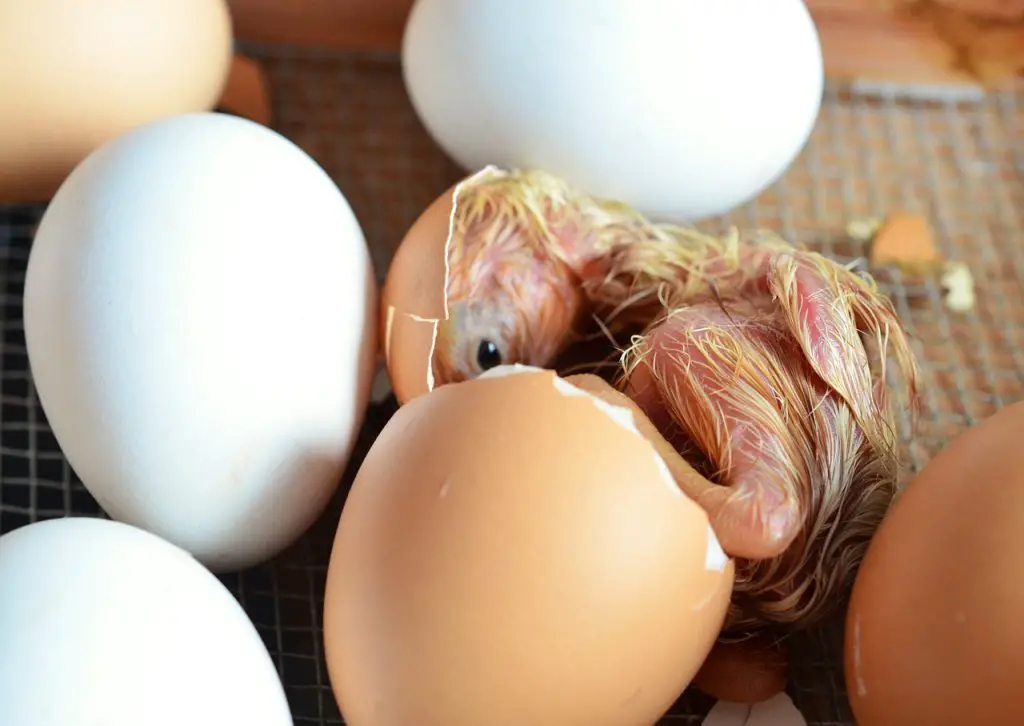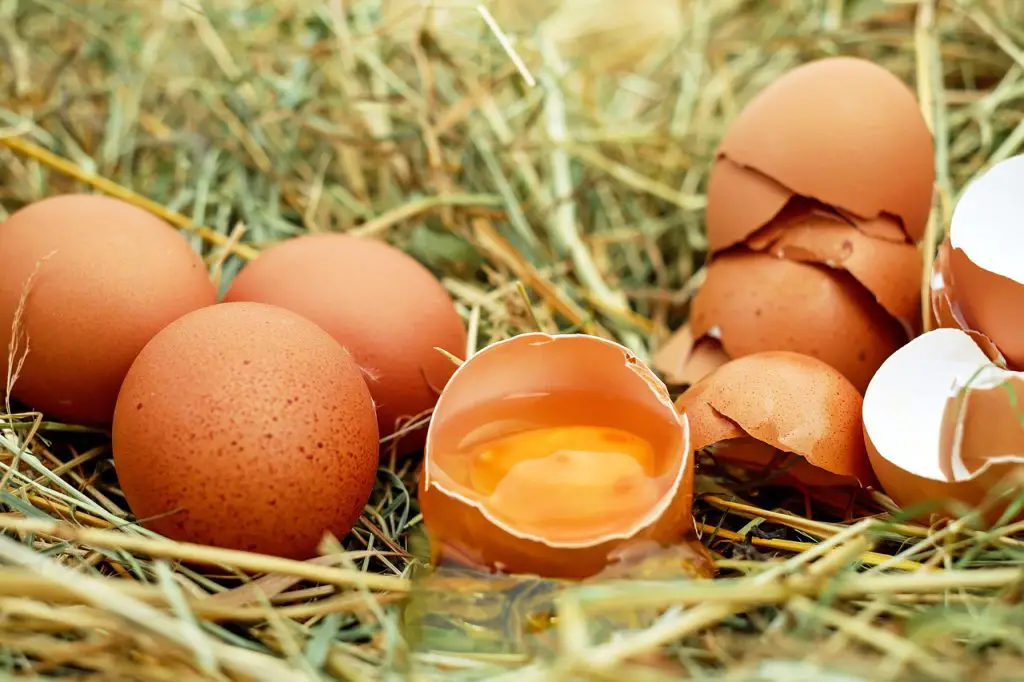Birds exist in different regions of the world. All bird species have different habitats, locations, and ways of life. Birds have a wide range of characteristics, including varying structures and quantities of their eggs. You may have wondered why eggshells are hard so in this article, we look at the answer.
Birds lay eggs with hard shells to protect the contents from the environment and predators. The shells contain all the nutrients and food that the young birds need to grow before hatching. Essential amino acids and proteins are contained in the shell.
If you want to know more about why birds eggs have hard shells, please read on.
Birds are animals but some people don’t realise why. Find out more here

Chickens and ducks are domestic birds that lay more than 350 eggs a year. The yolk, the yellow component, provides nutrients to the young bird before the egg hatches.
The yolk contains a large number of cells organized in clusters. These clusters perform collaborative functions to streamline chick development.
Albumen, the white part of the egg, provides floating protection to the yolk. Albumen also provides food to the developing bird.
The external hard shell lined with a thin and robust skin contains the yolk and albumen. The primary function of the shell is to protect the inside against environmental conditions.
Birds lay eggs in many different types of nests. Birds that lay eggs in the ground, holes or sheltered places usually have white shells. On the other hand, birds that lay eggs in areas more exposed to the environment have coloured shells.
Do you know why birds lay eggs? Find out in this article I wrote
Why do bird eggs have hard shells?
Birds have been making substantial efforts to make the sturdiest eggshells for millions of years. Research shows that eggshells play a crucial role in providing a protective, robust, biological chamber with nutrients for a baby bird’s development.
Bird eggs have hard shells to protect the young from some predators and the environment. The eggs contain all the nutrients and food to allow the young to grow while in the egg.
Some eggshells are neither strong nor weak but maintain neutral durability with good resistance against breaking until the egg is ready for hatching. Organic and inorganic materials make the outer structure of the egg.
Eggshells contain a wide range of proteins, amino acids, and minerals, including calcium, strengthening its structure and maintaining stability. The nanostructured mineral composition makes eggshells robust and durable.
These minerals are calcium and osteopontin, essential nutrients found in bones. Eggshells undergo various changes over time and will lose their strength. Eggshells get thinner and weaker before the bird starts to hatch.
Researchers have investigated eggshells and found changes in structural and mechanical properties when the egg undergoes hatching. When a bird lays an egg, the shell remains durable to protect it against breakage.
When the baby bird grows inside the egg, it requires calcium to develop its musculoskeletal structures and tissues. The baby bird gets essential nutrients from the shell, including calcium and proteins.
The shell’s inner portion dissolves to provide these nutrients to the chick during incubation. At the same time, ionic minerals weaken the shell, which will break naturally when the bird is ready to hatch.
Do you know where birds lay their eggs? Find out here
Why are Eggs with Hard Shells Important?
Thickness and pore size are two primary factors determining the eggshell’s strength. Scientists use an advanced, cutting-edge electron microscope to examine and study eggshells. A healthy chicken eggshell has a thickness of 0.3 millimetres with over 17,000 microscopic pores.
The primary function of the pores is to let oxygen, CO2, and moisture pass through the membrane. These pores are tiny enough that they prevent environmental pathogens like bacteria and viruses from entering the cells.
However, eggshells with big pores and thinner shells are more vulnerable to bacteria and viruses. A healthy shell deflects harmful bacteria that usually fit through larger pores on a more delicate shell.
The bloom, also called the cuticle, is a thin coating covering the shell and providing extra protection. The inner layer of the shell offers another defence layer, preventing external pathogens from penetrating the egg.
The outer and inner layers work together to keep the content of the egg healthy and safe. However, the inner layer is ineffective if the outer one is thin and weak because the shell is the first line of defence against environmental pollutants and pathogens.
Do you know how bird eggs form? Find out here
Are bird eggs and reptile eggs similar?
While some reptiles give birth to live young, most lay eggs. However, these are different from bird eggs. Reptiles generally lay eggs that are soft, unlike bird eggs which are hard. The shape and colour of reptile eggs are also generally different to bird eggs.
Although these differences are not universal in most classes and species, researchers still don’t know the cause of these variations.
Shape
Reptiles and birds have different egg shapes. The former has symmetrical eggs, and the latter generally has a well-designed and asymmetrical egg shape with tapering at one end. While more research is needed, some studies show that the asymmetrical structure prevents birds’ eggs from falling off cliffs or rolling out of nests.
August is an excellent month for spotting British birds. Here are 10 to spot in August.

Shell
The shell structure is another factor that makes birds’ eggs different from reptilian eggs. Reptile eggs are softer with thinner shells, unlike the sturdy shells that birds lay to protect their young.
Reptiles’ eggs with soft shells are more vulnerable to bacteria, viruses, CO2, moisture, and other environmental substances. All these, except moisture, can harm reptilian eggs. In contrast, birds’ eggs have evolved for centuries and developed their own moisture-producing mechanisms inside the cells.
Bird eggs don’t need additional moisture from the outside environment, unlike reptilian eggs. Not all reptilian eggs have soft and weak shells, with some species, such as turtles, laying their eggs in wet environments. Turtle eggs have more rigid shells than most reptiles, preventing the egg from absorbing too much moisture.
Colour
Egg colour is another marked difference between reptilian and avian eggs. Although science can’t prove why the colours are different yet, some studies highlight that reptiles hide their eggs in the ground.
Birds, unlike reptiles, lay eggs in more conspicuous places. The open nests prevent birds from hiding eggs in the crevice, unlike reptiles that bury their eggs underground.
However, bird eggs are usually camouflaged against the surrounding environment, thanks to various colours. This provides some sort of protection against predators.
Do you know how long birds incubate their eggs? Find out here.

